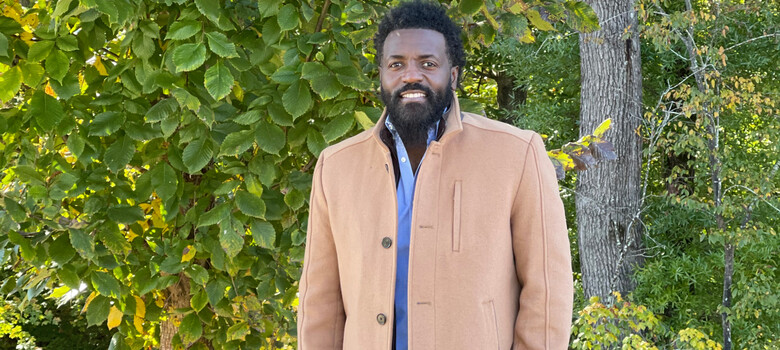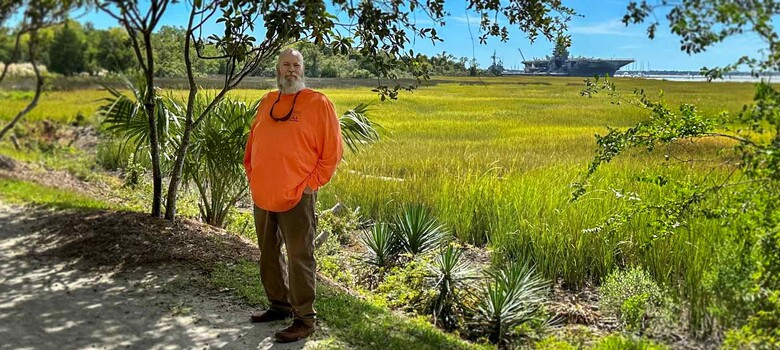Living Liver Donor and Robotic Liver Transplant Surgery Save Baby

Darla Harvey holds Kara Pace in Wake Forest, NC. Harvey donated a portion of her liver to Kara in 2023.
When baby Kara Pace needed a liver transplant, a friend of the family stepped up to donate part of her liver. After undergoing the first robotic liver transplant surgery at Duke Health, baby and donor are doing well.
Kara Pace of Wake Forest was three weeks old when she was diagnosed with biliary atresia -- a condition in which the bile ducts get blocked by scar tissue -- by Duke pediatric liver specialist Gillian Noel, MD. Shortly afterwards, Kara underwent surgery to connect part of her intestine to her liver, creating a path for bile to flow. It was a success. “She had a really good life for six to nine months before things started to happen again,” said her mom, Ai Pheeng Wee.
Countdown to Liver Transplant
When Kara was just under a year, she started having bleeding episodes, severe enough to require blood transfusions. The cause was severe portal hypertension. Pressure in her blood vessels built so much that they began to burst. After seeking opinions, consultation and prayer, Wee said “we decided that liver transplant was the best option for her.”
Now it was time to find a liver -- challenging because such a small baby requires a suitably-sized liver. Kara had two options: a liver from a deceased donor, or, since the liver grows back, a liver from a living donor. That was her best bet, Kara’s dad, Marquis Pace, said, because her condition wasn’t yet severe enough to place her high on the national liver transplant list.
It was the best option for other reasons, too. “The benefits of the living liver donation for a recipient are huge,” said Duke living donor transplant coordinator Tara Robisch. “Obviously, it's a decrease in wait time. We can schedule the surgery, so if you need anything done prior to it, it can be arranged. Studies show that recipients who receive a living donor organ tend to have a faster recovery, and the organs tend to last longer.” That said, living donor liver transplants are fairly rare in the United States, accounting for about 6 to 10% of liver transplants.
Finding a Donor
In the summer of 2023, Pace and Wee posted on Facebook about needing a liver donor for Kara. They were overwhelmed by the response. “There were people signing up who we didn't even know, people who are neighbors, who found out through friends of friends. It was just amazing,” Pace said.
One of the people who saw the post was Darla Harvey. Her husband, Chad, was the pastor of their church. After signing up to be evaluated, she received a call from Robisch. “I call her my reality check nurse,” said Harvey. “The first thing she said was that this was a very intense process.”
Vetting a potential living donor requires an in-person evaluation lasting up to two days and includes many tests. “Once you are approved for surgery, the inpatient stay can be anywhere from five to seven days,” said Robish. “Recovery takes about six weeks, with 12 weeks of lifting restrictions. We want the donors to have a caregiver available to them for the first couple weeks following the operation, depending on how they are feeling.”
Harvey was game. “We valued Kara's life. My liver was a solution to their problem,” she said.
Learn more about Kara's journey to receiving a living liver donation.
Robotic Liver Transplant Surgery
In the fall of 2023, Kara returned to the hospital because of bleeding. The time was right for the transplant. “We scheduled it for November 15. That day was just life-changing for us,” said Wee.
About a week before surgery, Harvey got a call from Duke abdominal transplant surgeon Kadiyala Ravindra, MBBS, who told her that they would like to perform her surgery robotically.
“Robotic surgery increases magnification,” explained Dr. Ravindra. “The visibility is much better. The robotic instruments are versatile and make dissection much easier." This means a smaller incision, so the pain is less, the risk of infection is less, and the recovery is faster. This was the first time that Duke performed a liver transplant surgery robotically, Dr. Ravindra said, joining the small handful of transplant centers nationwide that have performed the procedure this way.
Transplant and Recovery is a Success
The surgery was a success, and Harvey went home four days later.
“It was the worst those first few days, and then you gradually get stronger,” Harvey said. “The surgery was the week before Thanksgiving, and by Christmas, I really did feel a shift in my energy level. After about three months, the doctor released me for full activity, as long as I don’t overdo anything. I would say now that if I didn’t have the scar, I wouldn’t know anything was different. Duke was absolutely wonderful from start to finish, from the care of the transplant team to the care of the nurses, everything was fantastic.”
“She did really well,” said Dr. Ravindra. “Of course, she had the wonderful support of her family. They were involved in her recovery care. It's a rich experience for the team to meet an individual like this who comes forward and donates an organ.”
Kara is doing well, too. “Most of the time, barring any surgical complications, Infections, or rejection down the road, the transplanted liver will last the remainder of their life,” said Dr. Ravindra.
A Trusted Liver Transplant Team
Trusting Duke with Kara’s transplant was an easy decision. “Kara was born at Duke, so we had good experience with the NICU team,” said Wee. “We talked to centers all over the country, but we know that Duke has renowned surgeons, well-known doctors, and we really love our hepatology team, our Dr. Noel.”
“We're one of the few centers where the majority of patients that we transplant are babies,” said Dr. Noel. “We have expertise in transplanting little patients with little vessels and little ducts that need to be very carefully connected. We are also one of the few pediatric centers that performs living donor liver transplants. So not only do we have transplants from the national waiting list, we also have living donor transplants. Overall, I think we're a center that explores all the options, presents them to the family in an unbiased manner, and then holds the family’s hand as we walk through the transplant journey together.”
Blossoming Since Transplant
Today, Kara is two years old. “She’s growing and doing well,” said Pae. “She’s an easygoing and loving kid who just likes to chill and see what’s going on around her.”
“Her personality has blossomed since the transplant,” added Wee. “She is a little bit more outspoken, a little bit more energetic. There are not enough words to express our gratitude to Darla.” While visits with Harvey are kept to a minimum because Kara needs to be isolated to avoid infection, the two share a special bond.
“When I see her, I'm just very, very grateful for the opportunity to do this,” Harvey said. “It was a learning experience for me. It was a growing experience for me too, and it was really an honor to do it for her.”





